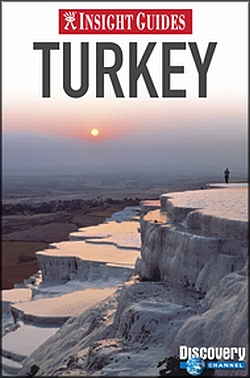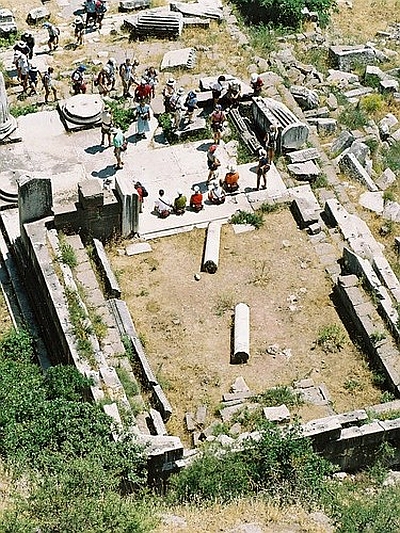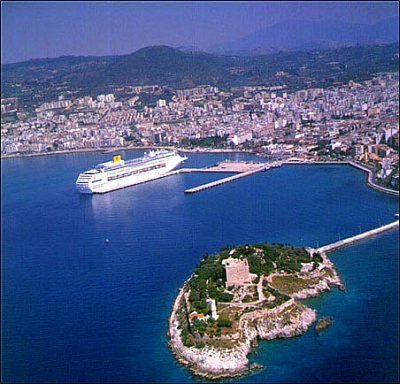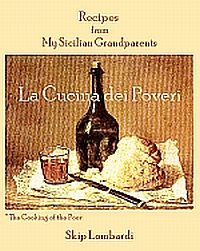On Guidebooks…
March 25th, 2010
As a travel consultant specializing in the Mediterranean and the Middle East (I’ve lived and travelled extensively throughout those regions), I always urge my clients to read about a place before they make any reservations. I regularly compile both general and special-interest reading lists, making suggestions for travellers who may have a month to backpack through the Pontic Mountains of the Black Sea coast or merely an afternoon to escape their cruise-ship’s shore-excursion to Ephesus.
I have clients who ask for no more than clean youth hostels and overnight buses and many others for whom a 150-foot private yacht and a Lear-jet are barely adequate. Even after three decades of travel experience, I still have to do my homework to keep up with what my clients want—or think they want—based on what they’ve seen, read, or heard before they come to me.
In some ways, it’s more work than ever. Now, in addition to doing my own research in situ, I have to know what Rick Steeves, Conde Nast, Fodor, Frommer, The New York Times, Travel & Leisure, and assorted Websites are saying. So, I read a lot of prosaic, and sometimes silly, articles that were cut and pasted from PR materials supplied to travel-writers on fam trips. And knowing my clients won’t be able to read a Google map of the ancient city of Pergamum on an iPhone when it’s high-noon, without a shade-tree in sight, I review guidebooks.

Archeological site of Pergamum
That’s right, I still value those relics of alternative information technology: hand-held, dead-tree devices containing static data on analog pages. Many of my favorites are not in English; others are long out-of-print, and that may be just as well, because their irreplaceability makes them too valuable for me to be tempted to pack them in this age of luggage minimalism.
For years, I’ve been a fan of the INSIGHT GUIDES series—using their stunningly illustrated (and consequently hefty) volumes to help plan my own travel. Whether using them in my long-time stomping grounds in Turkey, Greece, Syria, and Jordan or for lands beyond (South America and East Africa), I have always found that their cogent text and photos compelled me to want to learn more, as both a reader and a traveller. And in this Internet era, I think that’s what guidebooks SHOULD do.
Recommendations of hotels and restaurants, closing times, train schedules, and fare prices, change too rapidly to be well-documented in books. These days, that information is best found online and confirmed, as needed, by email, a phone call, or fax. With Internet cafes and Wi-Fi access so widespread, much of what guidebooks once contained need not be committed to printed pages. If you want extensive lists, with stars and prices to rate hotels and restaurants, Fodor and Frommer will oblige you. But if you’d prefer pithy commentary on the Kurdish-Turkish dispute, the politics of urban building, ancient mythology, Byzantine gossip, and opinionated travel recommendations (“The road south leads to Hakkari, a town best avoided…“), Insight Guides: Turkey will not disappoint.
The hundreds of color photos, larger type, and attractive lay-out on coated stock mean that Turkey weighs about two pounds. Both to pack and also to lug Turkey along as one negotiates the cobbled alleys of Istanbul, requires a real commitment from its owner. However, those winning photos are worth many times the weight, for they do speak volumes. So rather than criticize the series for being too fat, I would say that I unflinchingly recommend the books for planning your travels. But for most people, who want to travel light, the guides are best left home or at least back in your lodgings. Pocket guides they are NOT!
Insight Guides were first developed to serve adventurous European and British travellers, so they cover some terrain that may surprise Americans. The guides range from individual countries (Cuba, Malta, Namibia, Burma…) and a few states (Colorado, Florida, Texas…), to regions (Tuscany, Oman & the UAE, the American Southwest, the Turkish Coast…), and cities (Istanbul, Oxford, Kuala Lumpur, Perth…). There are also a handful of idiosyncratic guides to Amazonian and Indian wildlife and marine life in the South China Sea.
Insight also produces the Fleximap™ a laminated, folded city map. As an example, ISTANBUL includes a decent street index, detailed mini-maps of popular tourist areas, 26 short descriptions of major sites, and panels of emergency phone numbers with very basic notes on opening/closing hours, currency, and transportation. Tough enough to withstand a spilled glass of Turkish tea and fingers sticky from baklava, the map this would be perfect for the cruise passenger docked for two days in Istanbul.

Cruise ship docked in Kusadasi, the Turkish port for Ephesus
But suppose you’ll be touring one or more countries on your own for a couple of weeks? You don’t want to pack a library, but you do want more than a map to read when you’ve missed your Greek island ferry and need to plan the next sixteen hours. If I were to chose ONE series for on-the-spot utility, I would select the narrow-format green Michelin guides—not as light as they once were, but still portable and packed with intelligent, entertaining writing on history and sights. Still in evidence are those convenient stars of recommendation. In the old days, when the guides were only in French, we also had those stock phrases mérite un détour and vaut le voyage .) As before, the Michelin guides include annotated lodging and dining selections and excellent maps that anticipate the user’s needs. (The Athens metro plan notes stations as they are actually signed, in Greek, along with English phonetic spellings.)
For further utility, the latest green Michelins include Web addresses, making them truly helpful planning companions. Unfortunately, Michelin doesn’t cover nearly as many regions as the Insight series (You’ll get Thailand, British Columbia, Lauguedoc-Rousillon and Greece, but no Turkey.)
So, if you are “planning to plan” a trip, go to the library or a a real bookstore to actually see (and lift) a few books in the series mentioned. And to get a dizzying view of the coverage available from just ONE publisher-distributor, go to Langenscheidt.com. I knew them first for their language-learning series, and I still have my yellow plastic-covered pocket Turkish dictionary from the 1970’s. This German publishing conglomerate now handles both the Insight and Michelin guides, along with the Berlitz and Langenscheidt dictionaries, phrasebooks, and CDs. Langenscheidt is also distributing an interesting series of cookbooks, but we’ll save our take on those for a future post.



